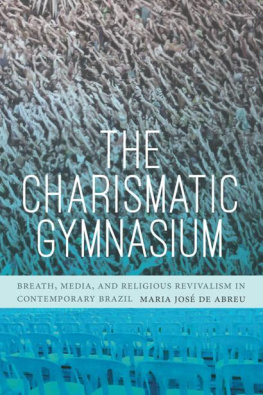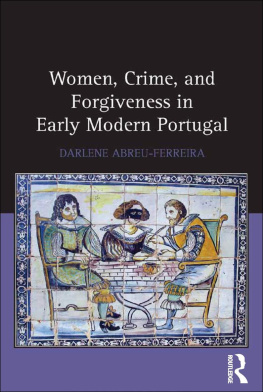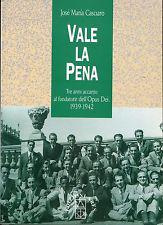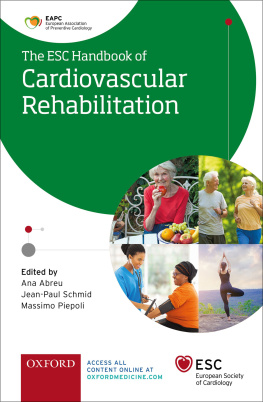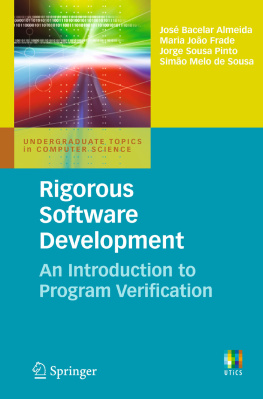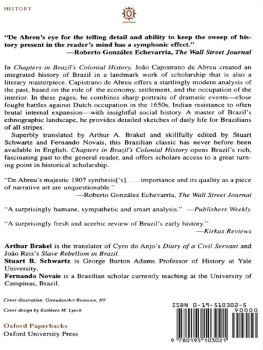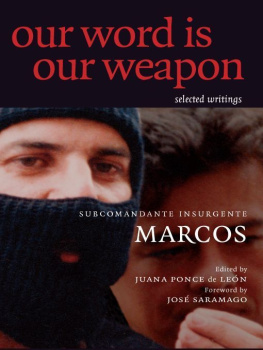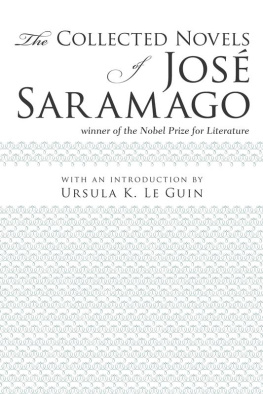Maria José de Abreu - The Charismatic Gymnasium
Here you can read online Maria José de Abreu - The Charismatic Gymnasium full text of the book (entire story) in english for free. Download pdf and epub, get meaning, cover and reviews about this ebook. year: 2021, publisher: Duke University Press, genre: Science. Description of the work, (preface) as well as reviews are available. Best literature library LitArk.com created for fans of good reading and offers a wide selection of genres:
Romance novel
Science fiction
Adventure
Detective
Science
History
Home and family
Prose
Art
Politics
Computer
Non-fiction
Religion
Business
Children
Humor
Choose a favorite category and find really read worthwhile books. Enjoy immersion in the world of imagination, feel the emotions of the characters or learn something new for yourself, make an fascinating discovery.
- Book:The Charismatic Gymnasium
- Author:
- Publisher:Duke University Press
- Genre:
- Year:2021
- Rating:5 / 5
- Favourites:Add to favourites
- Your mark:
- 100
- 1
- 2
- 3
- 4
- 5
The Charismatic Gymnasium: summary, description and annotation
We offer to read an annotation, description, summary or preface (depends on what the author of the book "The Charismatic Gymnasium" wrote himself). If you haven't found the necessary information about the book — write in the comments, we will try to find it.
The Charismatic Gymnasium — read online for free the complete book (whole text) full work
Below is the text of the book, divided by pages. System saving the place of the last page read, allows you to conveniently read the book "The Charismatic Gymnasium" online for free, without having to search again every time where you left off. Put a bookmark, and you can go to the page where you finished reading at any time.
Font size:
Interval:
Bookmark:
THE CHARISMATIC
GYMNASIUM
BREATH, MEDIA, AND RELIGIOUS REVIVALISM IN CONTEMPORARY BRAZIL
Maria Jos de Abreu
DUKE UNIVERSITY PRESSDurham and London2021
2021 Duke University Press
All rights reserved
Printed in the United States of America on acid-free paper
Designed by Amy Ruth Buchanan
Typeset in Minion Pro by Copperline Book Services
Library of Congress Cataloging-in-Publication Data
Names: Abreu, Maria Jos de, [date] author.
Title: The charismatic gymnasium : breath, media, and religious revivalism in contemporary Brazil / Maria Jos de Abreu.
Description: Durham : Duke University Press, 2021. | Includes bibliographical references and index.
Identifiers: LCCN 2020020640 (print)
LCCN 2020020641 (ebook)
ISBN 9781478009719 (hardcover)
ISBN 9781478011347 (paperback)
ISBN 9781478010296 (ebook)
Subjects: LCSH: Anthropology of religionBrazil. | LeadershipReligious aspectsCatholic Church. | Religion and politicsBrazil. | ChristianityBrazil.
Classification: LCC GN470.A274 2020 (print) | LCC GN470 (ebook) | DDC 306.60981dc23
LC record available at https://lccn.loc.gov/2020020640
LC ebook record available at https://lccn.loc.gov/2020020641
Cover art: Photographs by the author.
For Lina, of course.
Like millions of others, I am under lockdown in response to the spread of the coronavirus. From my apartment in New York City I look down a deserted Broadway. The avenue is one straight line for ambulances speeding by, but there is little more. Yet the edges of this central artery within Manhattan look slightly out of focus, a trembling of contours I associate with the heat of fever. It is as though global warmings continued muffled cry has eventually downloaded into humans in the form of a virus affecting our breathing and our average temperature. If something will become apparent in the years to come, it is that air is not just an empty dimension within which humans exist but the substance through which existence itself is possible.
In such times it is not lost on me that the organizing concept of this book is pneuma, the Greek term for air, breath, or spirit. Written under the signature of gratitude to my 86-year-old mother, she will just miss its release. As I write these lines she is in hospital infected with COVID-19. COVID exposed a tumor. A doctor informs me over the phone that the situation is irreversible. For all the powers of digital media to offset our physical confinement, I am told that no communication technologies are available in her ward, the same one where she worked for nearly forty years. I wake up to the fact that she never owned a mobile phone, and I ask an old friend from my hometown to bring one to her. This technological interface seems to be the only way to share airspace with my mother, as though the digital has become the great air reservoir of the world. Despite agreeing to bring the device to her bed, the hospital staff tell me that she is disoriented and isnt making any sense. And who isnt disoriented? I ask in frustration. But I realize there is no point in arguing. I am smashed by the complexity of it all, my daughterly love finding solace only in the memory of a woman who loved silence and lived it soundly, especially in the later years of her life.
Breathe in. Breathe out. A fine balance keeps us alive. And yet for most of our lives we are hardly aware of its mechanism. Air partakes in eliding the conditions of the very reality it enables. Yet the air we breathe today is becoming closer to our thinking, no longer the mere (read: vital) background substance through which thoughts are possible but instead the very element that aligns our lungs to our brains. One good example of this is how performative paradoxes dominate our thinking, as though one side of a pressure seeks to draw balance from a pressure on the other. I sustain my condemnation of corporate capitalism through books I buy online from Amazon. I teach my students not to doubt the benefits of methodological doubting. I tell my son to think with his own head. Because of the virus, Im in confinement in the name of a common good that exposes my economic privilege. Conscious of it or not, we have grown sick of hearing about performative paradoxes. And yet our sickness itself is symptomatic of the fact that, ubiquitous and insistent, the performative paradox has gradually lodged itself in our chests. It hosts itself in the structure of our breathing. For what is breathingthe alternation between oppositesif not a performative paradox, civil war in our lungs.
The rule in religion, politics, media, or the market is no longer simply to discipline or regulate the rhythms that animate public institutions and populations but to infuse them with what William Butler Yeats once called the antithetical multiform influx, that is, an undecidable veering that draws us to its middle. The image is that of the swing of a pendulum whose oscillation from tick to tock does not tell time, less so where things are going, but constitutes itself as time by means of the very motion.
Bearing this in mind will help make sense of contemporary authoritarian populism in Brazil and other parts of the world. When Jair Bolsonaro and Donald Trump talk about the threat of coronavirus, their words are not pronouncements that take place in the present tense. Insomuch as the present is disjointed, the virus is always already both a dire danger and an overblown nuisance. To say that Bolsonaro and Trump are deniers of the virus is to fail to see how entangled their denial is in the already tomorrow when they will be saying the extreme opposite. To accuse these rulers of being paragons of contradiction is to miss the point entirely. That would be to impart them with grounds they actively disavow. A contradiction would assume a subject without caesura, a form of singularity that aspires to be self-identical. But sovereigns like Trump and Bolsonaro are deeply fractured; indeed they wield their sovereignty by upholding the rift like a war trench from which to launch their semiotic terrorism, even to the point of auto-annihilation.
In an odd twist of brutalist aesthetics, the cracks in the system are exposed, and not in purview of transparency but so as to allow for the total and organic identification between a subject and his praxis. As long as we fail to see the strategic coupling of opposites at the heart of contemporary governance, we wont be able to grasp how the Right operates its extremism. The epistemic leap I see necessarily involves something like a reconceiving of the political through the problem of substance. In this sense, the operations of breathing that COVID-19 is making apparent, like some powerful reagent, may also lend themselves to better grasping how power works today.
New York City, April 17, 2020
This book began in conversation with a crew of faculty members and colleagues at the Amsterdam School of Social Science Research. Thanks to Birgit Meyer for inviting me to be part of the international research group she ran on religion and media in that institution, in whose dynamic and intellectual bosom many of the ideas in this book were found. Thanks to Peter van der Veer for his advocacy on my behalf. I am grateful to Johannes Fabian for his teaching and for his trust in my project when doubt threatened to engulf it. And to Ana Lindo for graciously introducing me to the city of So Paulo. Special thanks to Irfan Ahmed, Marieke Bloomenberg, Alexander Edmonds, Ajay Gandhi, Anouk de Koning, Suzanne Kuik, Rachel Spronk, Shifra Kisch, Olga Sezneva, Olga Soudi, Malini Sur, Marleen van Ruijven, and Marta Zogbi for friendship and comradeship.
I want to thank those who, at one point or another, read and talked with me about my writing, transforming it for the better: Ananda Abeysekara, Alena Alexandrova, Courtney Bender, Thomas Carlson, Elizabeth Castelli, Thomas Csordas, Marleen de Witte, Iracema Dulley, Claudio Lomnitz, Eduardo Dullo, Abou Farman, Francio Guadeloupe, Lotte Hoek, Stephen Hughes, Mette Lvschal, Eileen Moyer, Valentina Napolitano, Bruno Reinhardt, Emilio Spadola, Patricia Spyer, Martijn Oosterbaan, Mattijs van der Port, Michael Taussig, Otvio Velho, and Samuel Weber. Special thanks to Rafael Snchez for his intellect, Peter Geschiere for collegial sustenance, Rosalind Morris for brilliance, Brian Larkin for inspiration, and Jeremy Stolow for stalwart encouragement. Carlo Caduff and Angie Heo have been a source of friendship, spirited engagement with ideas, and support all the way. I have often asked myself whether I would be where I am now had they not been on my horizon. I am thankful everlastingly to Charles Hirschkind for being a seriously critical interlocutor and generous reader for many years. Rosa Norton has been a diligent proofreader and concept polisher too. One last read of parts of the manuscript by Emily Ng sharpened the idea of the project. Thanks to Gisela Fosado and Alejandra Meja at Duke University Press for trust and direction, and to my project editor Lisl Hampton for patiently and valiantly traversing the gaps between the worlds of the book, the readership, and my nonnative English. This work has been possible thanks to funding support from Fundao Para a Cincia e a Tecnologia, the Amsterdam Institute for Social Science Research, and the Forum for Transregional Studies of the Wissenschaftskolleg of Berlin.
Font size:
Interval:
Bookmark:
Similar books «The Charismatic Gymnasium»
Look at similar books to The Charismatic Gymnasium. We have selected literature similar in name and meaning in the hope of providing readers with more options to find new, interesting, not yet read works.
Discussion, reviews of the book The Charismatic Gymnasium and just readers' own opinions. Leave your comments, write what you think about the work, its meaning or the main characters. Specify what exactly you liked and what you didn't like, and why you think so.

